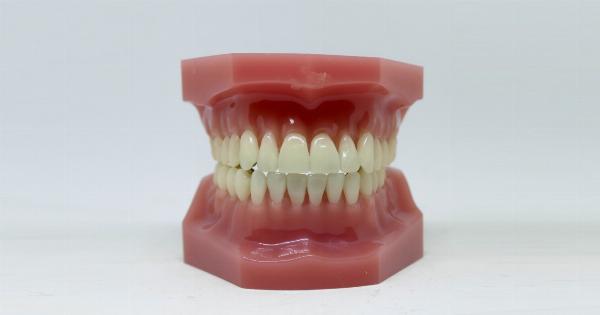Having a bright, white smile is a goal for many people who want to look their best. Teeth whitening is a popular cosmetic dental treatment that can help achieve this.
But before delving into the treatment, it’s important to understand the science behind why teeth become discolored in the first place.
Tooth Anatomy
The anatomy of a tooth is important to understanding how teeth can become discolored. A tooth consists of four main layers:.
- Enamel
- Dentin
- Pulp
- Cementum
The outermost layer of a tooth is the enamel, which is the hardest and most mineralized tissue in the human body. Underneath the enamel is the dentin, which is also mineralized but is softer than enamel.
The pulp is the soft tissue located in the center of the tooth and contains blood vessels, nerves, and connective tissue. The cementum is a thin layer that covers the root of the tooth.
Enamel Discoloration
The enamel of a tooth can become discolored for a number of reasons:.
- Staining from foods and drinks
- Tobacco use
- Age-related wear and tear
- Trauma or injury
- Excessive fluoride exposure
When teeth are exposed to staining agents such as coffee, tea, red wine, or tobacco, the enamel becomes discolored over time. The pigments in these substances can penetrate the tiny pores in the enamel and cause discoloration.
Additionally, as we age, the enamel of our teeth becomes thinner, revealing more of the underlying dentin. Dentin is naturally yellow in color, so as it becomes more visible, it can change the overall color of the tooth.
Trauma or injury to a tooth can also damage the enamel, causing it to become discolored.
The Role of Genetics
Genetics may also play a role in enamel discoloration. Some people may have naturally thicker or thinner enamel than others, which can affect the color of the teeth.
Certain genetic conditions, such as amelogenesis imperfecta, can also cause enamel abnormalities and discoloration.
Professional Teeth Whitening
Professional teeth whitening treatments work by breaking up the stains on the surface of the enamel.
The most common form of professional teeth whitening is bleaching, which involves using a whitening agent such as hydrogen peroxide or carbamide peroxide that is applied to the teeth in a controlled manner. The whitening agent penetrates the enamel and breaks up the stains, leaving the teeth looking brighter and whiter.
Although professional teeth whitening can be highly effective, it’s important to note that it is not a permanent solution. The effects of teeth whitening can last for several months to a few years, depending on the individual’s habits and lifestyle.
At-Home Teeth Whitening
At-home teeth whitening kits are also available, usually in the form of whitening strips or gels that are applied to the teeth.
These products typically contain a lower concentration of whitening agents than professional treatments, so they may take longer to produce results. However, they can still be effective for mild to moderate staining.
It’s important to follow the instructions carefully when using at-home teeth whitening products, as overuse can lead to tooth sensitivity or even damage to the enamel.
It’s also important to choose a product that has been approved by a reputable dental organization, such as the American Dental Association.
Preventing Enamel Discoloration
There are several steps that can be taken to prevent enamel discoloration:.
- Brush and floss regularly to remove surface stains and prevent tartar buildup.
- Avoid or limit foods and drinks that are known to cause staining.
- Quit smoking or using tobacco products.
- Limit exposure to fluoride, especially in children.
- Visit the dentist for regular cleanings and checkups.
Conclusion
Teeth whitening can be an effective treatment for enamel discoloration, but it’s important to understand the underlying causes in order to achieve the best results.
By taking steps to prevent enamel discoloration and choosing a safe and effective whitening treatment, you can achieve a brighter, whiter smile that you can be proud of.



























